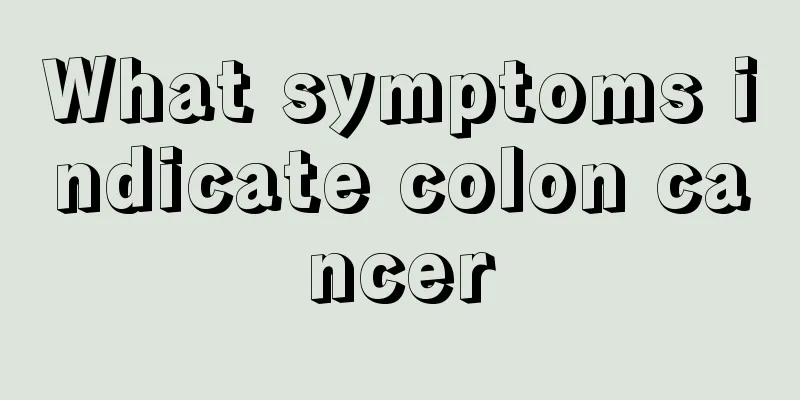What medicine should I take for runny nose and cough

|
Runny yellow nose and cough are usually symptoms of a cold, but it is best not to take medicine indiscriminately. Colds are divided into wind-cold colds and wind-heat colds. These two types of colds have different symptoms and require different treatments. If you want to treat them, you must first know which type of cold you have. Otherwise, if you take medicine indiscriminately, it will not only fail to cure the disease, but may also make the condition worse. What is a cold? Wind-cold colds are caused by the invasion of wind-cold evil and the failure of lung qi to flow freely. In layman's terms, it is what we often call a cold, which is a series of uncomfortable symptoms caused by external wind and cold that leads to lung dysfunction. The so-called cold cold refers to the feeling of pain or tightness all over the body after catching a cold, fever but obvious fear of cold, clear nasal discharge, not dry mouth, no or mild sore throat, white and thin sputum, stomach pain and bloating that occurs or worsens when exposed to cold, and clear and thin stools. It occurs more frequently in autumn and winter. The symptoms include body aches, nasal congestion, runny nose, wind-heat cold and phlegm. For treatment, both Western medicine and Chinese medicine can be used, and diet therapy can also be used, which not only cures diseases but also maintains health. Preventive measures include keeping warm, strengthening physical exercise, and improving immunity. You can also get vaccinations in advance. What is a wind-heat cold Wind-heat cold is caused by wind-heat evil invading the surface and disharmony of lung qi. Symptoms include high fever, slight aversion to wind, headache, sweating, red and swollen sore throat, cough, sticky or yellow phlegm, nasal congestion and yellow nasal discharge, thirst and desire to drink, red tip and edges of the tongue, and a thin white and slightly yellow tongue coating. Wind-heat colds are more common in summer and autumn and are caused by exogenous wind-heat. Traditional Chinese medicine believes that wind-heat cold is a superficial symptom caused by the wind-heat evil. How to get rid of wind-heat cold symptoms 1. Mulberry leaf mint drink Ingredients: 5 grams of mulberry leaves, 5 grams of chrysanthemum, 3 grams of mint, and 30 grams of bitter bamboo leaves. Method: Wash the above medicines with clean water, put them in a teapot, soak them in boiling water for ten minutes, and drink them at any time. Efficacy: This product has both a pungent and cool effect in relieving the symptoms of wind-heat colds, and can also be drunk as a preventive tea. 2. Three-flower tea Ingredients: 15 grams of honeysuckle, 10 grams of chrysanthemum, and 3 grams of jasmine. Preparation: Put honeysuckle, chrysanthemum and jasmine flowers into a teacup, brew with boiling water, simmer for 10 to 15 minutes, and drink instead of tea. Efficacy: Clears away heat and detoxifies. It is suitable for preventing and treating wind-heat colds, sore throats, carbuncles, etc. caused by heat toxins. In addition to being used for treatment, this tea can also help reduce internal heat in people who suffer from excessive internal heat. 3. Double Flower Red Fruit Drink Ingredients: 30 grams of honeysuckle, 15 grams of chrysanthemum, 10 grams of hawthorn, and 30 grams of honey. Method: Soak hawthorn in hot water for 30 minutes, add honeysuckle and chrysanthemum, boil over high heat for 3 minutes, filter, add honey and mix well. Take 1 dose daily, divided into 2 doses. Efficacy: Spicy and cool, detoxifying and relieving sore throat. It is mainly used to treat wind-heat cold. 4. Watermelon and tomato juice Ingredients: appropriate amounts of watermelon and tomato. Method: Take the watermelon pulp, remove the seeds, and squeeze the juice with gauze. First blanch the tomatoes in boiling water, peel them, and squeeze out the juice with gauze. Combine the two juices and drink as tea. Efficacy: Clears away heat, detoxifies, dispels summer heat and eliminates dampness. It is used to treat summer colds, with symptoms including fever, thirst, irritability, red and hot urine, poor appetite, indigestion, etc. 5. Hangzhou chrysanthemum sugar tea Ingredients: 30 grams of chrysanthemum sugar and appropriate amount of white sugar. Preparation method: Soak the chrysanthemums in boiling water in a teapot and add appropriate amount of sugar. Efficacy: Promotes lung qi and relieves cough, clears the accumulated fire in the three burners. It is suitable for patients with the initial stage of wind-heat cold, headache and fever. |
<<: What should I do with the red marks left by acne
>>: How long is the cesarean section wound?
Recommend
How to generally improve memory
Everyone wants to make themselves smarter, but du...
What are the early symptoms of prostate cancer?
Prostate cancer often occurs in the posterior lob...
What are the hazards of carbon powder to human body
I have always thought that toner is made of carbo...
What is the cure rate of ovarian tumors
Ovarian cancer is one of the most common gynecolo...
What foods are good for preventing liver cancer? Eating more of these three kinds of bamboo shoots can cure diseases and prevent liver cancer
Lettuce: Increase appetite, prevent anemia Lettuc...
What are the symptoms of fistula?
Anorectal fistula is also known as anorectal fist...
What is the reason why people gradually lose weight
Many people are constantly trying to lose weight,...
Can Epiphyllum be eaten
Speaking of Epiphyllum, many friends will think o...
The method of making garlic wine actually requires adding this?
Many people use ginseng and deer antler to make w...
Fat people tend to sweat easily in summer
The hot weather in summer will cause people to sw...
The cost of one course of chemotherapy for gastric cancer
Chemotherapy is one of the treatments for cancer....
Does tonsil cyst require surgery?
Tonsils are very fragile and often get infected a...
What causes scabies
Scabies is a common disease, mainly caused by sca...
There is a hard lump in the groin
If there is a lump in the groin, the first thing ...
Which parts should be massaged if you often have tinnitus?
Tinnitus and deafness are indirect occurrences in...









